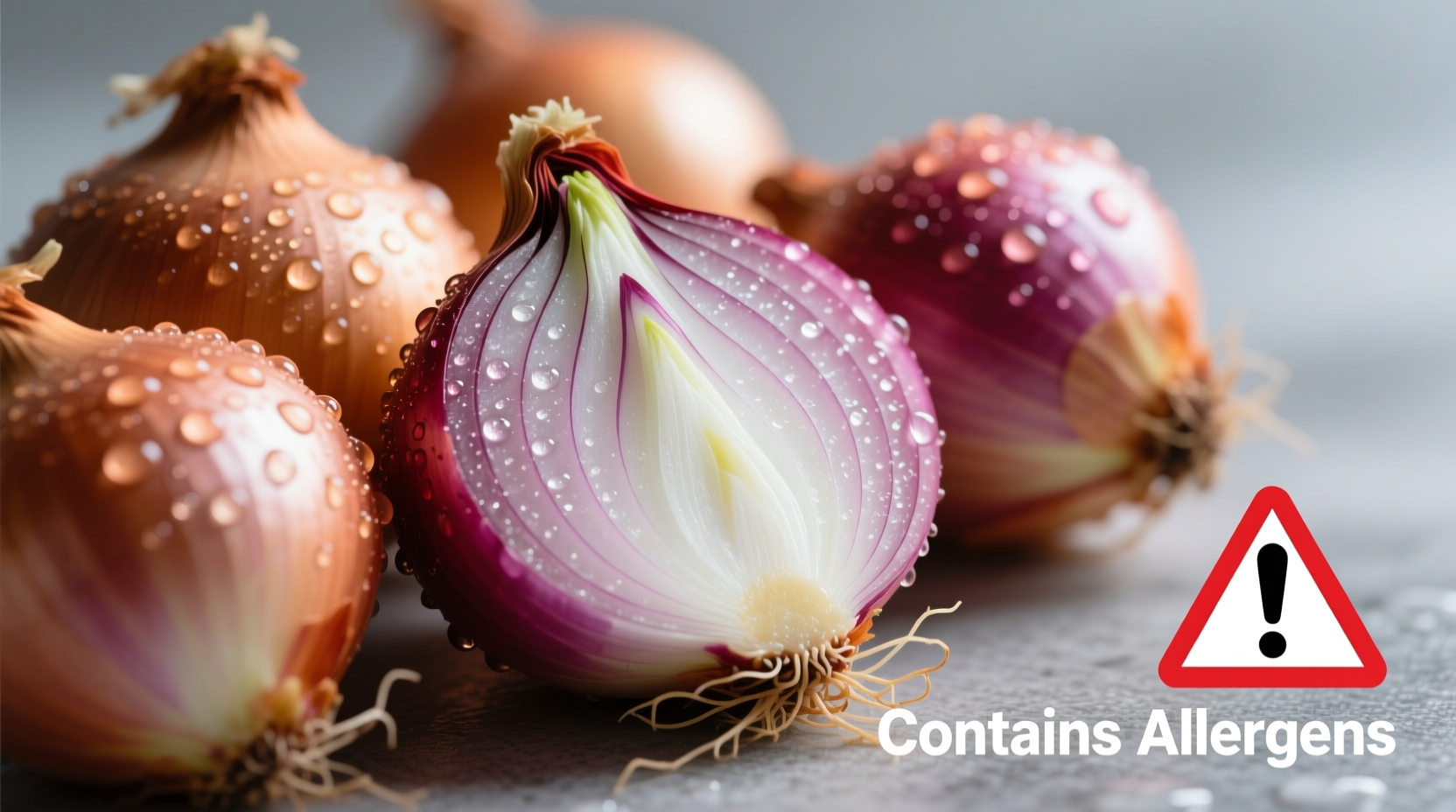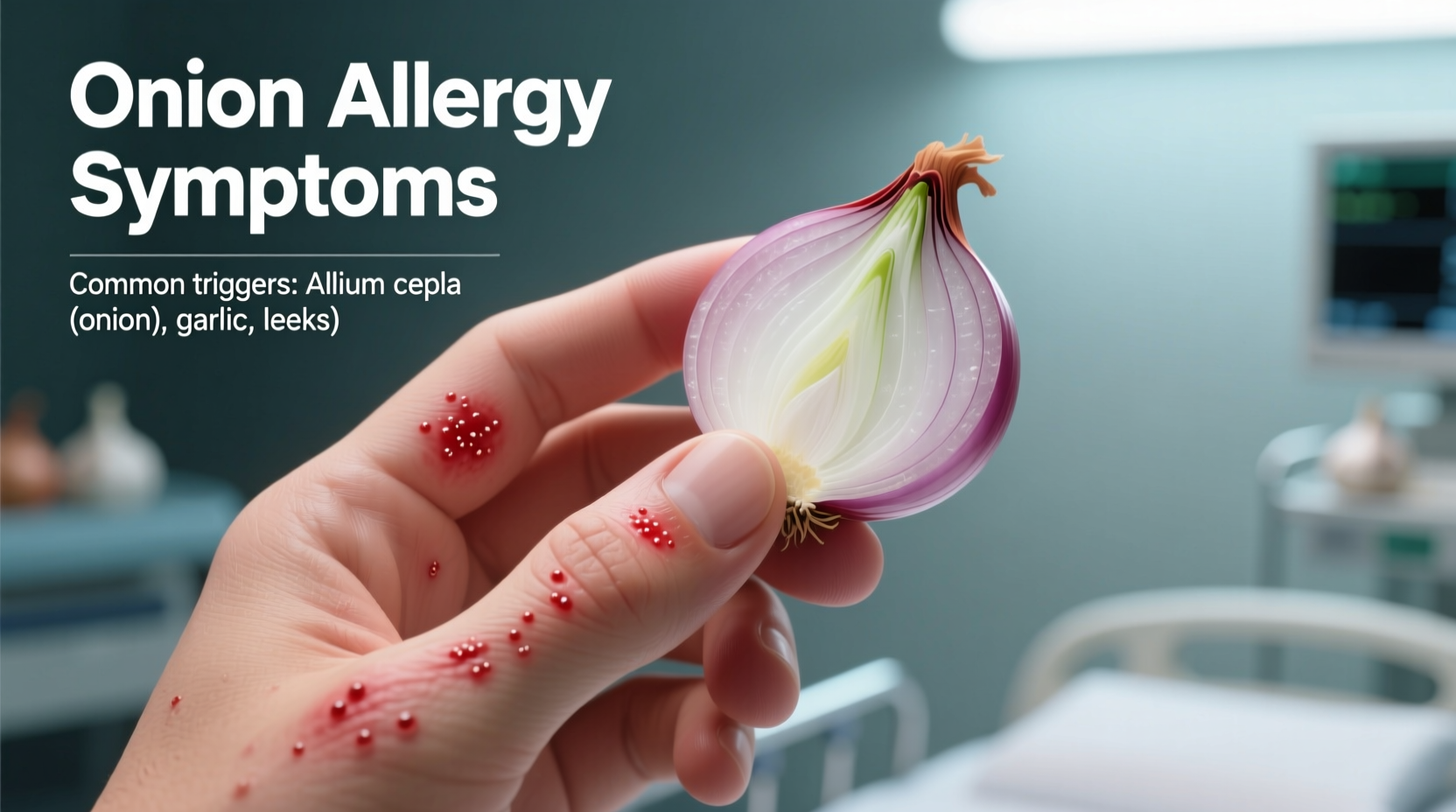Recognizing Onion Allergy: Your First Step to Relief
When you experience adverse reactions after eating onions, distinguishing between a true onion allergy and onion intolerance is critical for your safety. While both conditions cause discomfort, only an allergy triggers your immune system and can lead to potentially fatal reactions. This guide provides medically accurate information to help you identify symptoms, understand diagnostic options, and implement effective management strategies.
Onion Allergy vs. Intolerance: Critical Differences
Many people confuse onion allergy with intolerance, but these conditions have distinct mechanisms and implications:
| Characteristic | Onion Allergy | Onion Intolerance |
|---|---|---|
| Immune System Involvement | Yes (IgE-mediated) | No |
| Onset of Symptoms | Immediate (within minutes) | Delayed (hours later) |
| Common Symptoms | Itching, hives, swelling, breathing difficulties | Bloating, gas, diarrhea |
| Severity Potential | Anaphylaxis possible | Uncomfortable but not life-threatening |
| Required Medical Care | Allergist consultation essential | Dietitian may help manage symptoms |
This distinction matters because onion allergy symptoms require immediate medical attention when severe, while intolerance typically resolves with dietary adjustments. According to the American College of Allergy, Asthma, and Immunology, approximately 1-2% of food allergies involve less common triggers like onions, compared to more prevalent allergies like peanuts or shellfish (acaai.org).

Common Onion Allergy Symptoms by Severity Level
Symptoms can manifest within minutes of onion exposure and vary in intensity. Recognizing these patterns helps determine appropriate responses:
Mild to Moderate Symptoms
- Oral allergy syndrome: Itching or tingling in mouth, lips, or throat
- Skin reactions: Hives, redness, or eczema around contact areas
- Nasal symptoms: Runny nose, sneezing, or nasal congestion
- Digestive issues: Nausea, stomach cramps, or vomiting
- Eye irritation: Watery, itchy, or swollen eyes
Severe Symptoms Requiring Emergency Care
- Respiratory distress: Wheezing, shortness of breath, or throat tightness
- Cardiovascular symptoms: Rapid pulse, dizziness, or drop in blood pressure
- Swelling: Facial swelling, particularly of lips, tongue, or throat
- Anaphylaxis: Combination of symptoms affecting multiple body systems
The National Institute of Allergy and Infectious Diseases emphasizes that anaphylaxis is a medical emergency requiring immediate epinephrine administration and emergency care (niaid.nih.gov). Never ignore severe symptoms, even if previous reactions were mild.
When Onion Reactions Aren't Actually Allergies
Several conditions mimic onion allergy symptoms but require different management approaches:
- Oral Allergy Syndrome (OAS): Cross-reactivity between pollen and raw onions causing temporary mouth itching, typically without systemic symptoms
- Irritable Bowel Syndrome (IBS): Onions contain FODMAPs that trigger digestive issues in sensitive individuals
- Gastroesophageal Reflux Disease (GERD): Onions can relax the lower esophageal sphincter, worsening heartburn
- Food protein-induced enterocolitis syndrome (FPIES): Delayed vomiting and diarrhea, more common in infants
Research published in the Journal of Allergy and Clinical Immunology indicates that up to 40% of self-reported food allergies aren't confirmed through proper testing, highlighting the importance of professional diagnosis (jacionline.org).
Getting an Accurate Diagnosis
Self-diagnosis of onion allergy symptoms can lead to unnecessary dietary restrictions or missed serious conditions. Proper evaluation typically involves:
- Detailed medical history: Your allergist will document reaction patterns, timing, and potential triggers
- Skin prick test: Small amounts of onion protein introduced to skin to observe reactions
- Specific IgE blood test: Measures antibody levels against onion proteins
- Oral food challenge: Supervised consumption of onion under medical observation (gold standard)
- Elimination diet: Temporary removal followed by controlled reintroduction
The American Academy of Allergy, Asthma & Immunology recommends against at-home allergy tests, as they frequently produce false positives and lack clinical context (aaaai.org).
Managing Onion Allergy in Daily Life
Once diagnosed, effective management requires strategic planning:
Dietary Adjustments
- Read all food labels carefully—onions appear in unexpected products like soups, sauces, and processed meats
- Learn alternative names: Allium cepa, dehydrated onions, onion powder, shallots
- Communicate clearly with restaurant staff about your allergy using chef cards
- Identify safe substitutes: Asafoetida (hing) provides similar flavor without triggering reactions for some
Emergency Preparedness
- Carry epinephrine auto-injectors if prescribed by your allergist
- Wear medical identification jewelry stating your allergy
- Develop an emergency action plan with family members and coworkers
- Keep antihistamines on hand for mild reactions (but never as sole treatment for severe symptoms)
Living Well With Onion Allergy
While managing onion allergy symptoms requires vigilance, most people lead full lives with proper precautions. Work with a registered dietitian specializing in food allergies to ensure nutritional completeness, as onions provide certain vitamins and antioxidants. Recent studies suggest that some individuals with oral allergy syndrome to onions may tolerate cooked onions, as heat alters the protein structure that triggers reactions.
Remember that onion allergy symptoms can change over time—regular follow-ups with your allergist help adjust your management plan as needed. Never attempt to reintroduce onions without medical supervision, as reactions can worsen with subsequent exposures.











 浙公网安备
33010002000092号
浙公网安备
33010002000092号 浙B2-20120091-4
浙B2-20120091-4